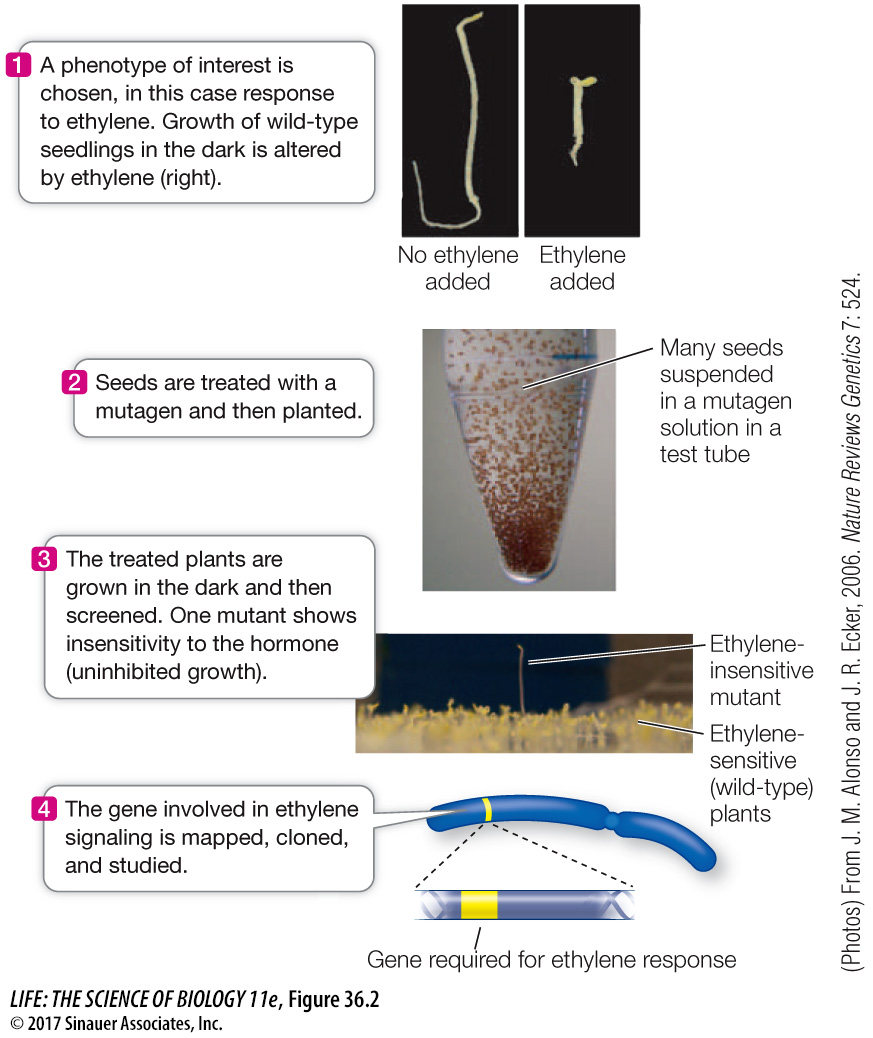Genetic screens have increased our understanding of plant signal transduction
In Chapter 19 we described how genetic studies can be used to identify the steps along a developmental pathway. Recall the reasoning behind these experiments:
If a mutation in a specific gene disrupts a developmental process, then the product of that gene must be involved in that process.
In a similar way, genetic studies can be used to analyze pathways of receptor activation and signal transduction in plants:
If proper signaling does not occur in a mutant plant, then the mutant gene must be involved in the signal transduction process.
Mapping the mutant gene and identifying its function is a starting point for understanding the signaling pathway. Arabidopsis thaliana has been a major model organism for plant biologists investigating signal transduction.
One technique for identifying the genes involved in a plant signal transduction pathway is illustrated in Figure 36.2. This technique, called a genetic screen, involves creating a large, random collection of mutant plants and identifying those individuals that are likely to have a defect in the pathway of interest. Plant genes can be randomly mutated in a variety of ways, including treatment with a chemical mutagen or the insertion of transposons (see Key Concept 17.2) randomly in the genome. After treatment, the plants are grown and then examined for a specific phenotype, usually a characteristic that is influenced by the pathway of interest. Once mutant plants have been selected, their genotypes are compared with those of wild-
research tools
Figure 36.2 A Genetic Screen Genetics of the model plant Arabidopsis thaliana can be used to identify the steps of a signal transduction pathway. If a mutant strain does not respond to a hormone (in this case, ethylene), the corresponding wild-

Q: In undertaking a search for natural mutant strains for ethylene response, how would you modify the procedure?
You could collect many seeds from strains of pea plants in nature. Do not treat these seeds with a mutagen, but allow them to germinate in the dark and then expose them to ethylene.